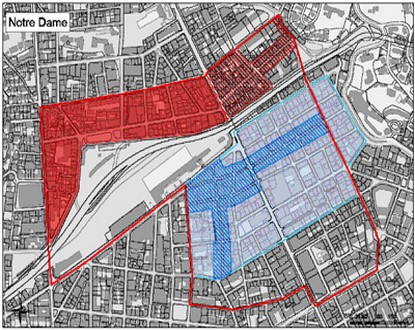By 2013, as part of the National Program for the Requalification of Degraded Old Neighborhoods (PNRQAD), around 500 neighborhoods across the country will be renovated, thereby improving the living conditions for nearly 4 million residents. Nice applied, and the Notre-Dame/Thiers/Vernier district was selected.
After receiving the green light from the ANRU (The public body proposed to support local authorities in their urban renewal projects) and overcoming residents’ opposition regarding the so-called Bensa Court affair, all conditions are now in place to take action.
To the great satisfaction of Christian Estrosi, Deputy Mayor of Nice, who stated, “We are going to realize a nearly 30-year wait,” during the public presentation of the project in the presence of residents from these neighborhoods.
In 3 or 4 years, the neighborhood will undergo a significant transformation, akin to an extensive “esthetic” surgical operation. Everything will be addressed: demolition of homes due to dilapidation or for better urban organization, housing rehabilitations, improvements to urban spaces, and finally, the development of public facilities.
These substantial interventions will contribute to enhancing and diversifying housing options, as well as opening up the neighborhood and requalifying public spaces to advance the social and economic integration of residents.
In essence, by sustainably improving the comfort and living conditions of residents, the project aims at the urban and social “reconquest” (a term Christian Estrosi repeated several times when discussing this dossier) of the most fragile areas.
The affected area spans a perimeter of 70 hectares, and by the end of the intervention plan, it will have been possible to eliminate substandard housing, return vacant homes to the market, and restructure the commercial fabric.
There is no doubt that this beautification program will have a leveraging effect, with private parties being interested in renovating their real estate holdings by taking advantage of subsidies through direct aids ranging from 20 to 80% or tax exemption measures to finance the work.


